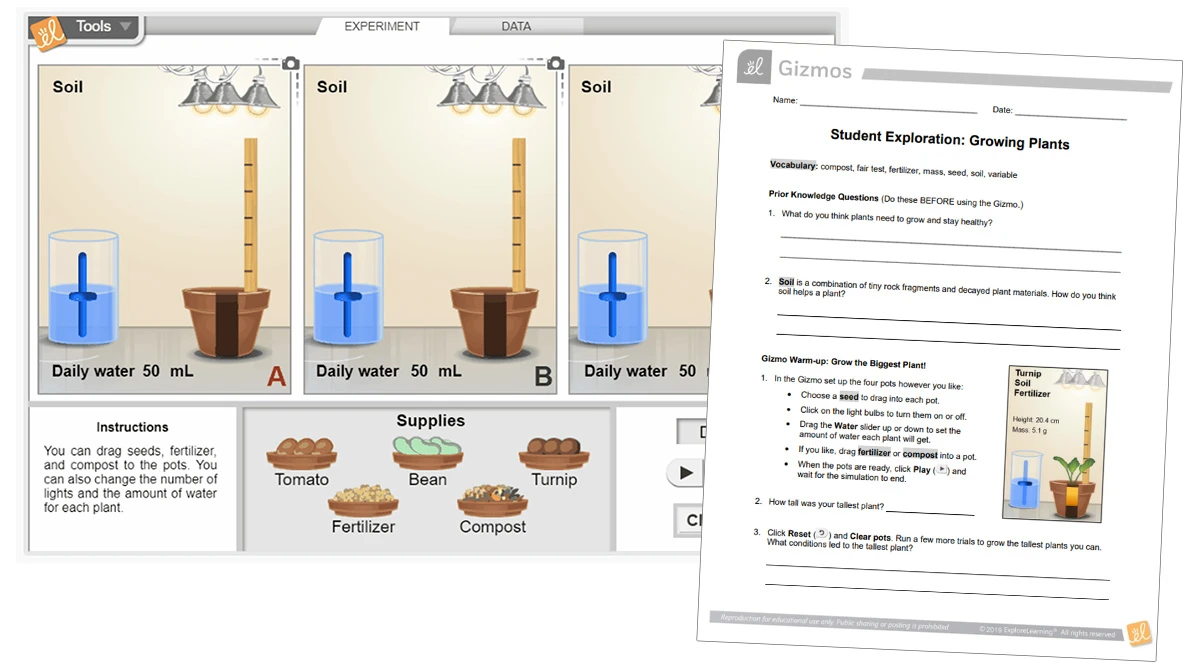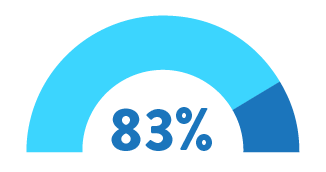
Every classroom has students with different strengths and challenges—not only academically, but also socially, emotionally, and behaviorally. What works for one student might not be the best fit for another, which is why personalized support is so critical.
That’s where targeted support systems come in. Many schools and districts use frameworks like the Multi-Tiered System of Support (MTSS) to ensure every student gets the help they need.
What is a Multi-Tiered System of Support (MTSS)?
What is a Multi-Tiered System of Support? This system, also known as MTSS, is a structured educational approach that supports students academically, behaviorally, and socially-emotionally through data-driven strategies. MTSS is a tiered structure that allows teachers and school leaders to identify and address students' diverse needs to provide proactive and organized support.
MTSS is also comprehensive, accounting for varying levels of academic and social-emotional support. Essential components of MTSS include screening, progress monitoring, multi-leveled support, and data-based decisions through collaboration.
A school might also implement Response to Intervention (RTI) or Positive Behavioral Interventions and Supports (PBIS) under the wider MTSS framework. MTSS goes beyond RTI by focusing on the whole child and encouraging collaboration with families, communities, and other stakeholders to support student success. MTSS also takes a more comprehensive approach by accounting for professional development and overall school culture.
The importance of MTSS in STEM
STEM subjects can be tough, and students grasp concepts at different paces. MTSS is crucial for STEM education because it ensures that all students, regardless of their learning levels or challenges, receive the support they need to succeed in science, technology, engineering, and math.
MTSS allows for tiered interventions, providing targeted instruction to students who need extra help. The three MTSS tiers include:
- Tier 1: Universal Supports (75-90%). High-quality and evidence-based instruction for all students.
- Tier 2: Targeted Supports (10-25%). Small group and short-term, targeted instruction for students needing additional help.
- Tier 3: Intensive, Individualized Supports (1-10%). Highly individualized interventions, such as one-on-one support.
How Gizmos support a MTSS framework
ExploreLearning Gizmos virtual math and science simulations for grades 3-12 provide endless opportunities to support MTSS goals, including customization, differentiation, and progress monitoring. Gizmos virtual labs and case studies promote inquiry-based learning and meet students at their unique levels to achieve classroom, grade-level, and school-wide learning goals.
Cassie Harrelson, an Educational Consultant for ExploreLearning, served as an educator, instructional coach, special education teacher, math specialist, and MTSS Coordinator in Colorado for over twenty years. As an MTSS Coordinator, she witnessed firsthand how critical it is to implement MTSS as a continuous system rather than disconnected parts. In this role, Cassie was responsible for overseeing and implementing the MTSS framework: coordinating the identification of students needing additional support, facilitating interventions at various tiers, monitoring student progress, and collaborating with teachers, families, and students to ensure the alignment of interventions with best practices.
Today, she visits classrooms and connects with educators worldwide to provide powerful STEM learning solutions. We asked Cassie: How do Gizmos simulations support MTSS?
“Gizmos are an excellent tool for MTSS (Multi-Tiered System of Support) because they provide interactive, engaging, and progress-monitoring resources that help teachers tailor instruction to students' diverse needs. By offering simulations, assessments, and visual learning aids, Gizmos allow for differentiated learning and support targeted standards-driven interventions for those who need additional support.”

Cassie Harrelson, Educational Consultant
Tier 1: Core instruction for all students
The Gizmos suite of interactive, high-quality instructional materials encourages real-world problem-solving to enhance core curricula and encourage scientific sensemaking. Gizmos are research-based and highly engaging, making them ideal for general Tier 1 instruction for all students.
All three types of Gizmos are aligned with state and NGSS standards to help students confidently engage with science and engineering practices in meaningful ways.
- Gizmos Simulations: A vast library of over 550 interactive math and science simulations and virtual labs designed for flexibility and open-ended exploration.
- Gizmos STEM Cases: Immerse students in real-world, in-depth case studies that allow them to solve problems from the lens of a STEM professional.
- Gizmos Investigations: Now available, new Gizmos Investigations facilitate deeper scientific sensemaking practices by leveraging Gizmos within engaging, ready-made investigations driven by student inquiry.
Gizmos include built-in formative assessment tools to support teachers with general Tier 1 instruction and beyond. Student feedback tools and interactive heatmaps simplify progress monitoring. Teachers can also view and sort the STEM Case heatmaps by specific practices and skills to monitor understanding and identify students needing additional MTSS Tier 2 or 3 support.
Tier 2: Targeted interventions
550+ virtual Gizmos for grades 3-12 cover various math and science topics. The library also includes pre-made STEM collections. Each Gizmo comes with pre-made and customizable supplementary lesson materials for easy planning and assessment. Teachers can fully adapt these resources to differentiate instruction and provide targeted Tier 2 support.
Gizmos Student Exploration Sheets are available in Microsoft Word, Google Docs, and PDF formats. With minor changes, educators and specialists can tailor these resources to target specific standards and skills students need to practice.

Growing Plants Gizmo and the matching Student Exploration Sheet.
Gizmos are also extremely flexible, allowing for repeated learning trials and experiments for additional Tier 2 support. For example, students could repeat the Frog Dissection Gizmo until they solidify their understanding of the material. Or, a small group of students needing additional practice with graphing can use virtual math simulations before taking an assessment.

Example of the Rotations, Reflections, and Translations Gizmo in action.
Tier 3: Intensive, individualized supports
Gizmos simulations also support at-risk students who need more intensive help. Educators can use Gizmos to provide highly individualized Tier 3 interventions in individual settings or targeted small groups.
“I have been using Gizmos for over 10 years. In all of my years in education, I have never had an online resource that is better able to support the science standards. The varied level of each activity within each Gizmo allows for differentiation. This helps all students learn the content. The Gizmos also allow teachers to differentiate instruction so that students at all academic levels are challenged. I love the way that Gizmos can be modified to include information that has been taught in the past. This is an excellent opportunity for teachers to review information throughout the year, thereby preparing students for end-of-grade tests.”
-Gizmos teacher
Benefits of using Gizmos in MTSS
Gizmos help make STEM topics more engaging, accessible, and effective, setting all students up for long-term success, no matter their beginning levels of understanding. Under the MTSS framework, all students can interact with the same Gizmo simulation while receiving differentiated Tier 2 or 3 support through customized supplementary materials or repeated practice.
Improved student success
Multiple independent efficacy studies show that Gizmos math and science simulations increase classroom engagement, content knowledge, scientific skills, and standardized test scores.
An ESSA Tier 3 study compared school-level data on the frequency of Gizmos usage and performance on NGSS-aligned high school state assessments. The sample consisted of aggregated data from over 21,000 students attending 93 different schools, with 78% of students classifying as risk for academic failure based on prior year scores. Students at schools with higher Gizmos usage were 1.3x more likely to meet or exceed test proficiency standards than those with lower Gizmos usage.
Enhanced student engagement
Since MTSS involves the whole child, it’s important to keep student confidence and engagement in mind when planning interventions. If students can build content knowledge and overall STEM confidence at the same time, it’s a win-win for everyone.
88% of teachers found that Gizmos improved student engagement and motivation. In a separate survey involving middle and high school teachers, 90% of educators agreed that Gizmos supported student engagement in their classrooms.

Agree that Gizmos supports student engagement

Agree that Gizmos supports student curiosity

Agree that Gizmos improves student confidence
“I have noticed that Gizmos motivate all students, even those who tend to be more apathetic with individual work assignments. Without a doubt, the Gizmos activities increase student learning. I enjoy seeing students authentically engaged in a way that builds their content knowledge and overall confidence in their ability to learn. As students become more confident in their ability to learn, their overall mindset changes. I notice them giving more effort with other activities. When students share their Gizmos results with other students, they become more social and willing to participate in other classroom activities.”
-Gizmos teacher
Support all of your students with Gizmos
Are you ready to elevate MTSS instruction and tiered support? Experience Gizmos today with a free classroom trial.